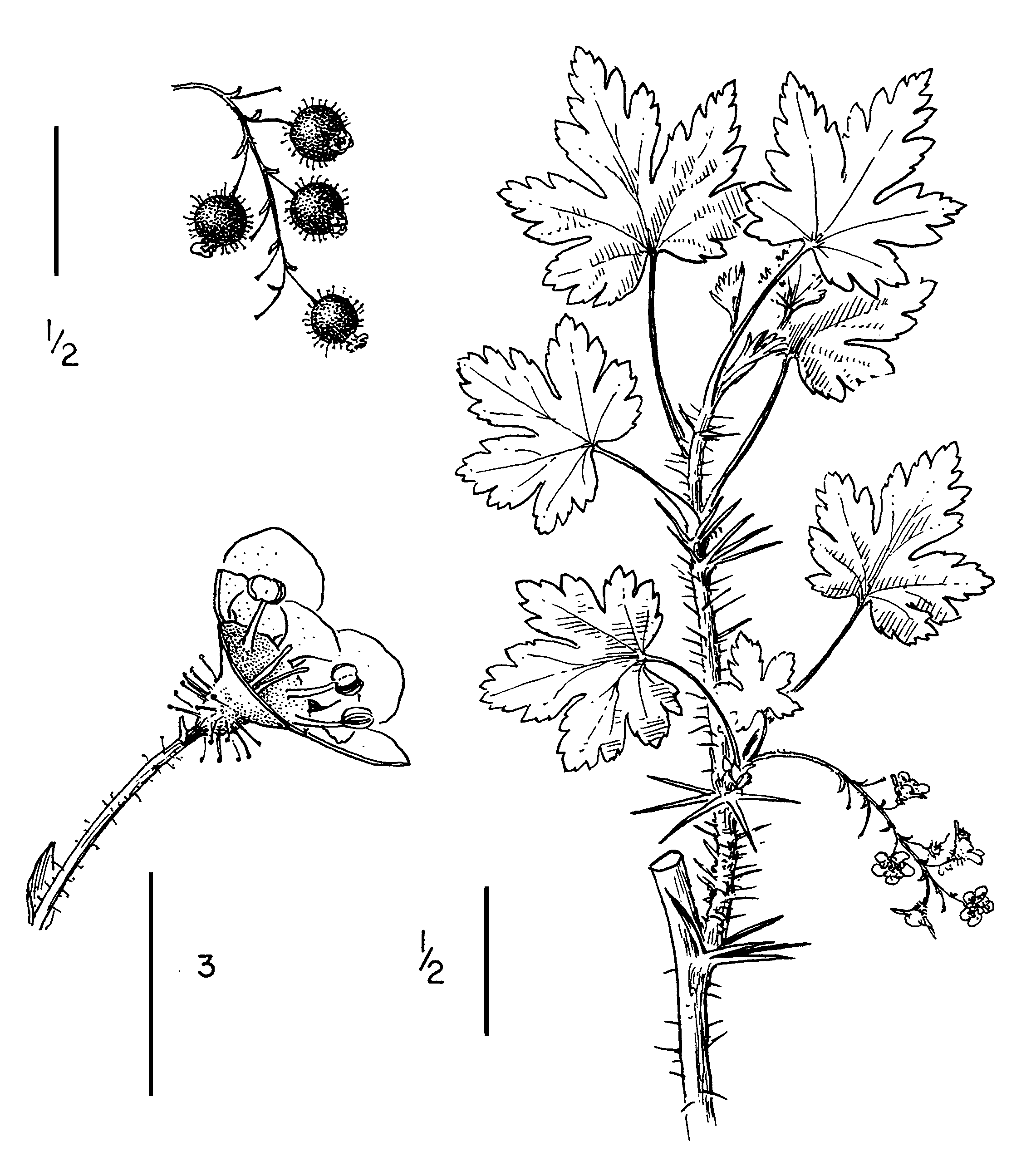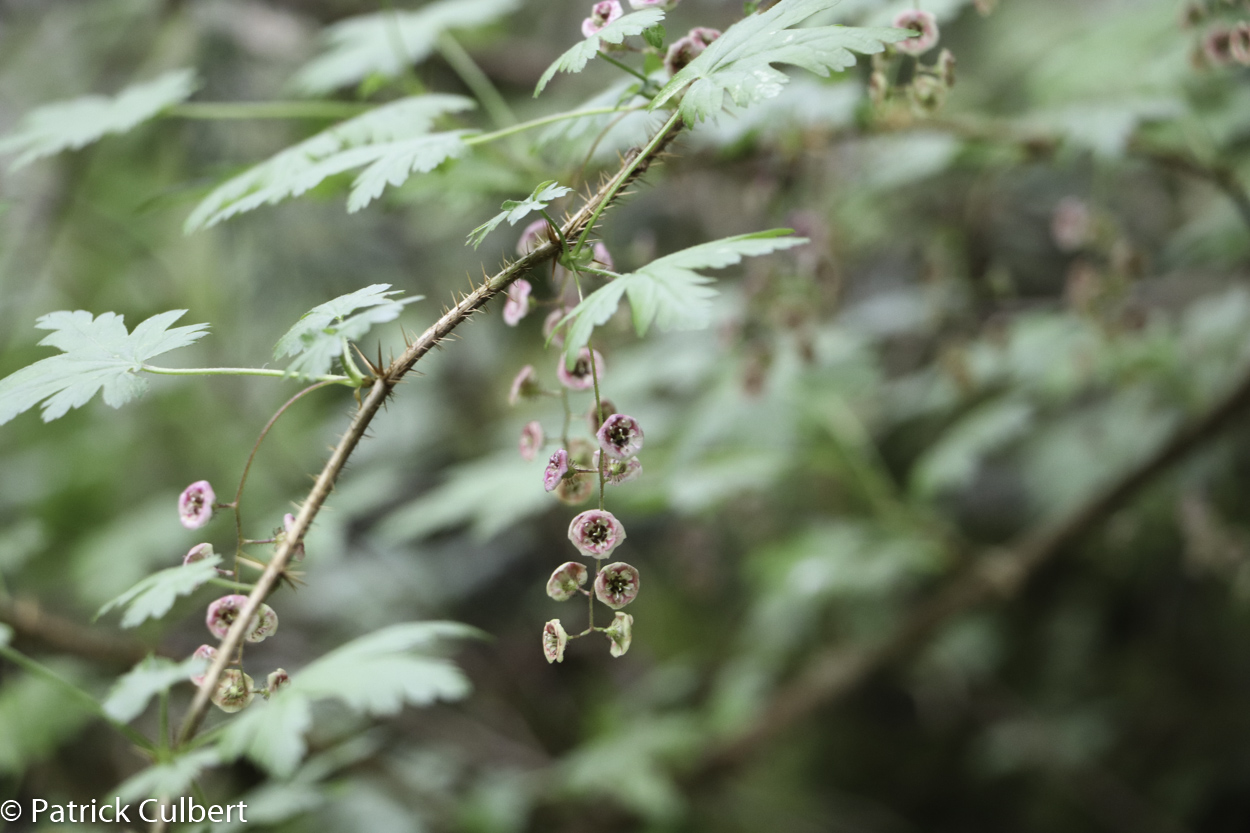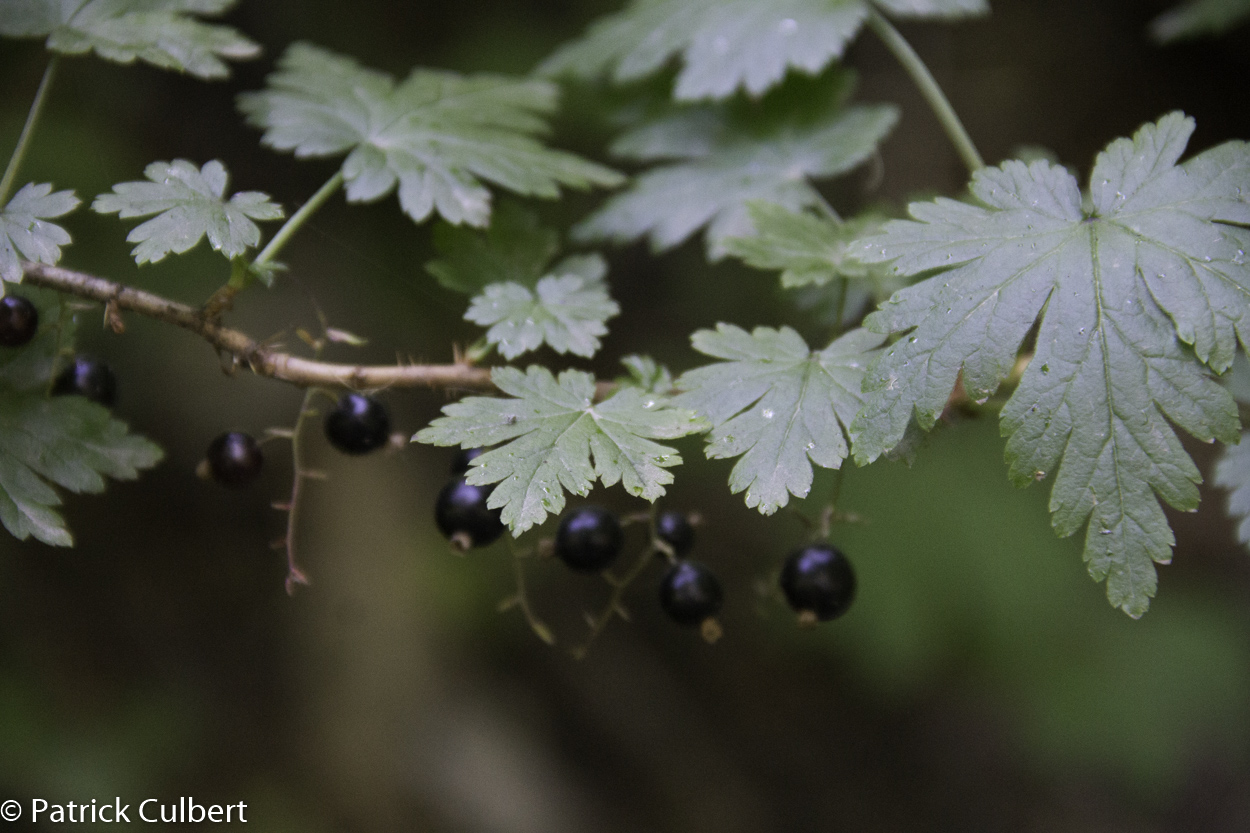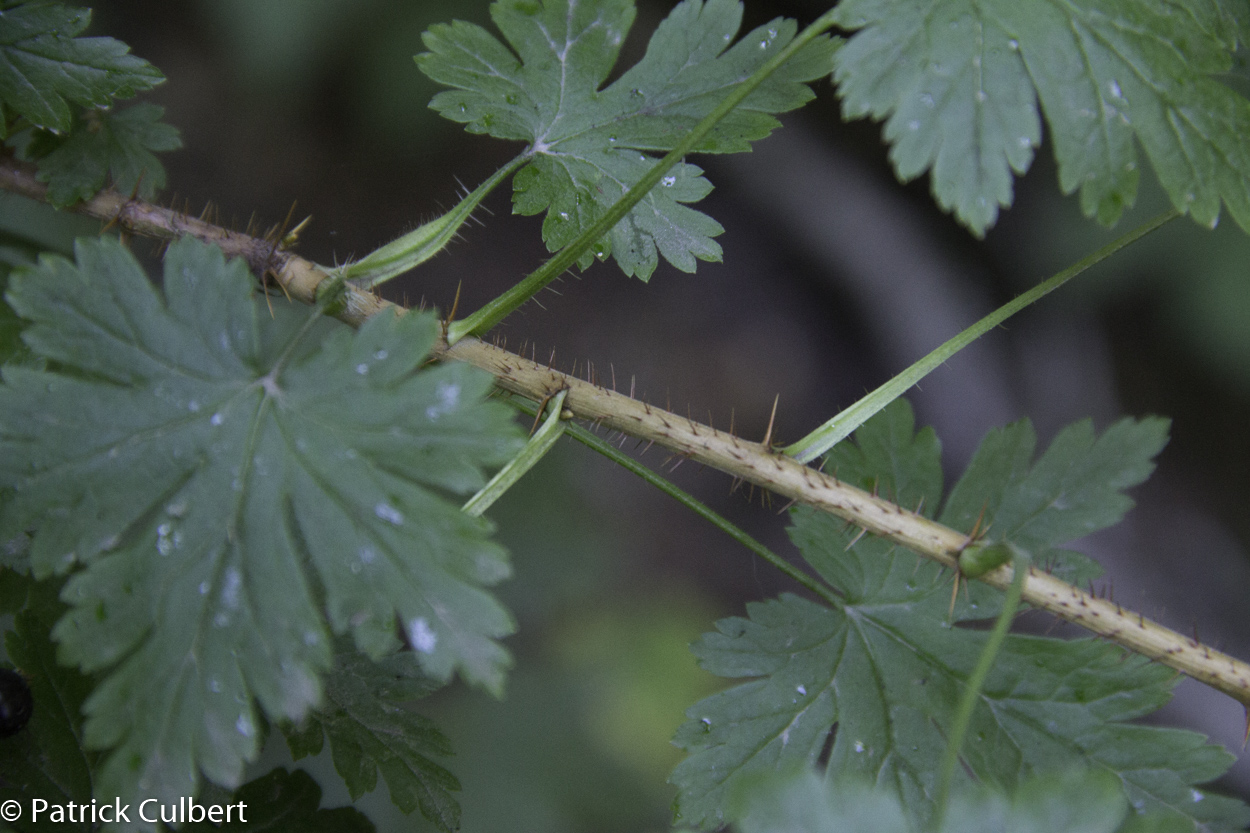Ribes lacustre – black gooseberry
Common Name
black gooseberry
Alternate Common Names
- prickly currant;
- black swamp gooseberry
Family
Grossulariaceae
Scientific Name
Ribes lacustre
Soil Moisture Regime (SMR)
- Medium (M)
- Wet (W)
Soil Nutrient Regime (SNR)
- Rich (R)
Video link
Hitchcock, C. Leo, and Arthur Cronquist. Flora of the Pacific Northwest: An Illustrated Manual © 1973. Reprinted with permission of the University of Washington Press.
General / Habitat
- An erect to spreading shrub
- Grows from moist woods and streambanks to drier forests and ridges
- All elevations
- Often grows on rotting wood
Key Identifying Characteristics
- Form: Growing 0.5-2 m tall, covered in numerous small, golden prickles with larger spines at leaf nodes (point where leaves are born on the stem), young stems green and older bark cinnamon-coloured
- Leaves: Alternate, somewhat maple-shaped with 5 deeply indented lobes, heart-shaped base, toothed margins, 2-5 cm wide
- Flowers: Reddish maroon, saucer-shaped, small, borne in drooping clusters of 7-15
- Fruit: Purplish black berries, bristly with stalked glands, palatable but sometimes insipid
Lookalikes
- Can be distinguished from other Ribes based on lack of leaf hairs, numerous prickles along stem length, and the purplish flowers borne in clusters of more than 7
Interesting Characteristics
- Berries are eaten by most coastal peoples
- The stem is thought by some to have mystical protective powers
External References
Sources
Douglas, G.W. et al (Editors). 1998-2002. Illustrated Flora of British Columbia, Volumes 1 to 8. B.C. Min. Environ., Lands and Parks, and B.C. Min. For., Victoria, B.C.
Pojar, J. and A. MacKinnon. 2014. Plants of Coastal British Columbia Including Washington, Oregon & Alaska. B.C. Ministry of Forestry and Lone Pine Publishing. Vancouver, B.C.







